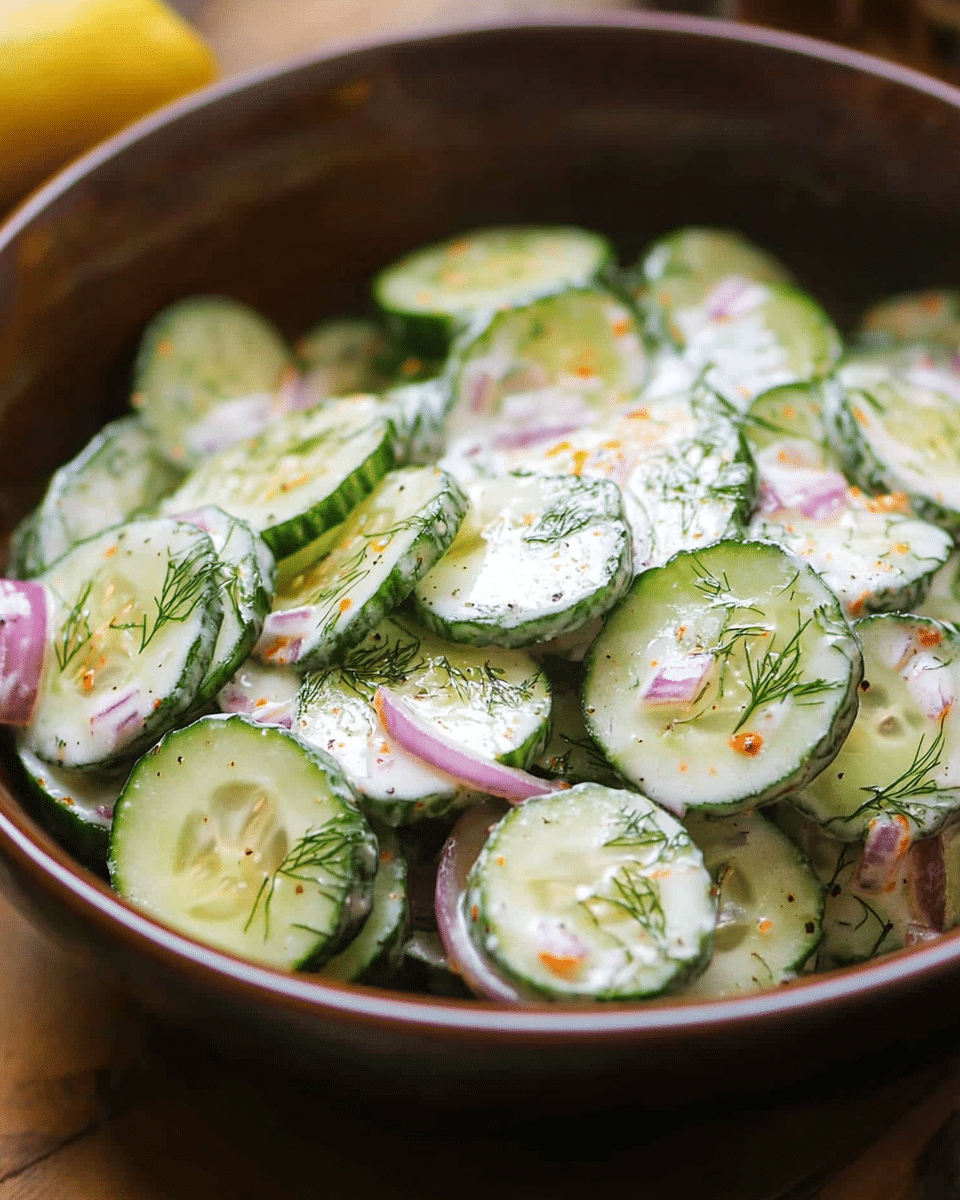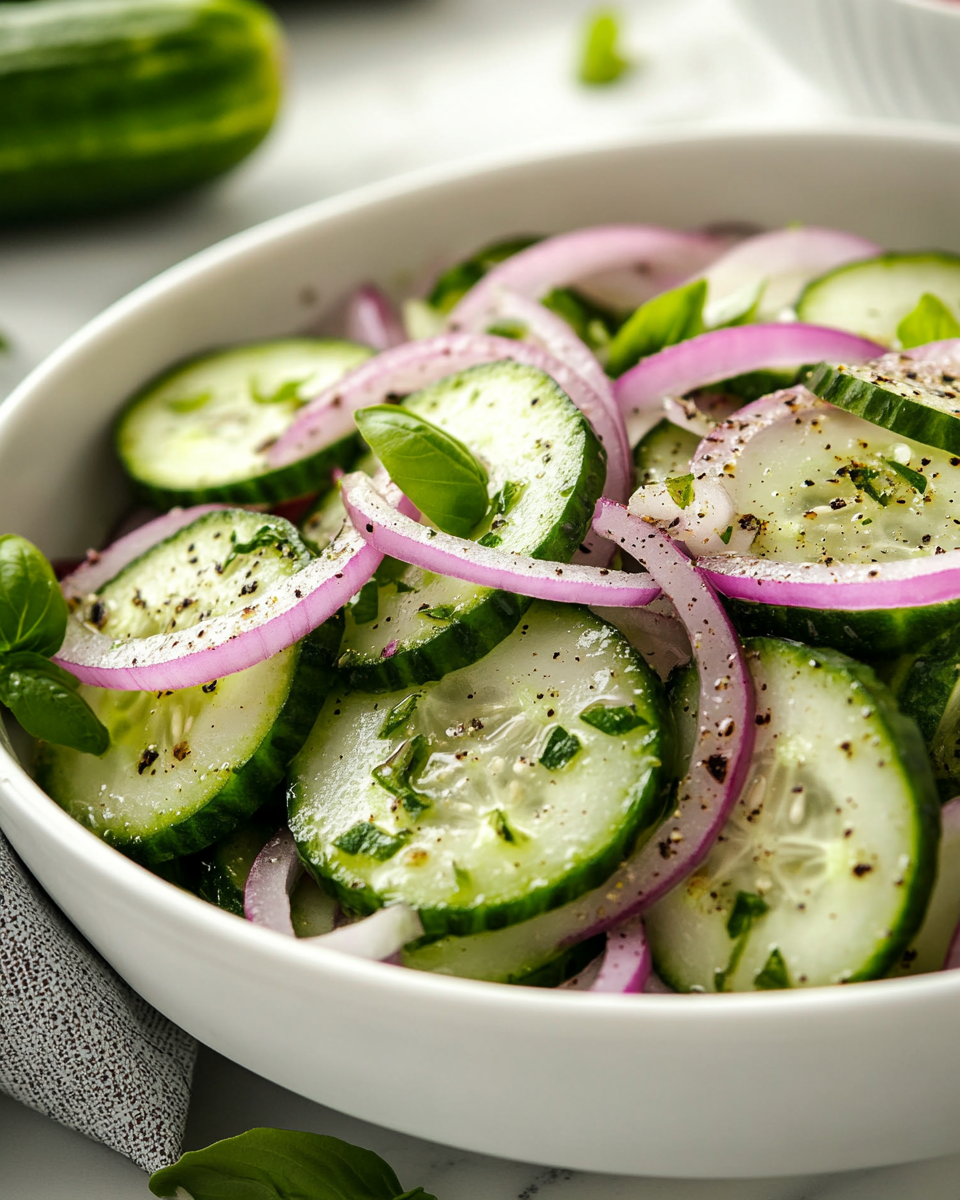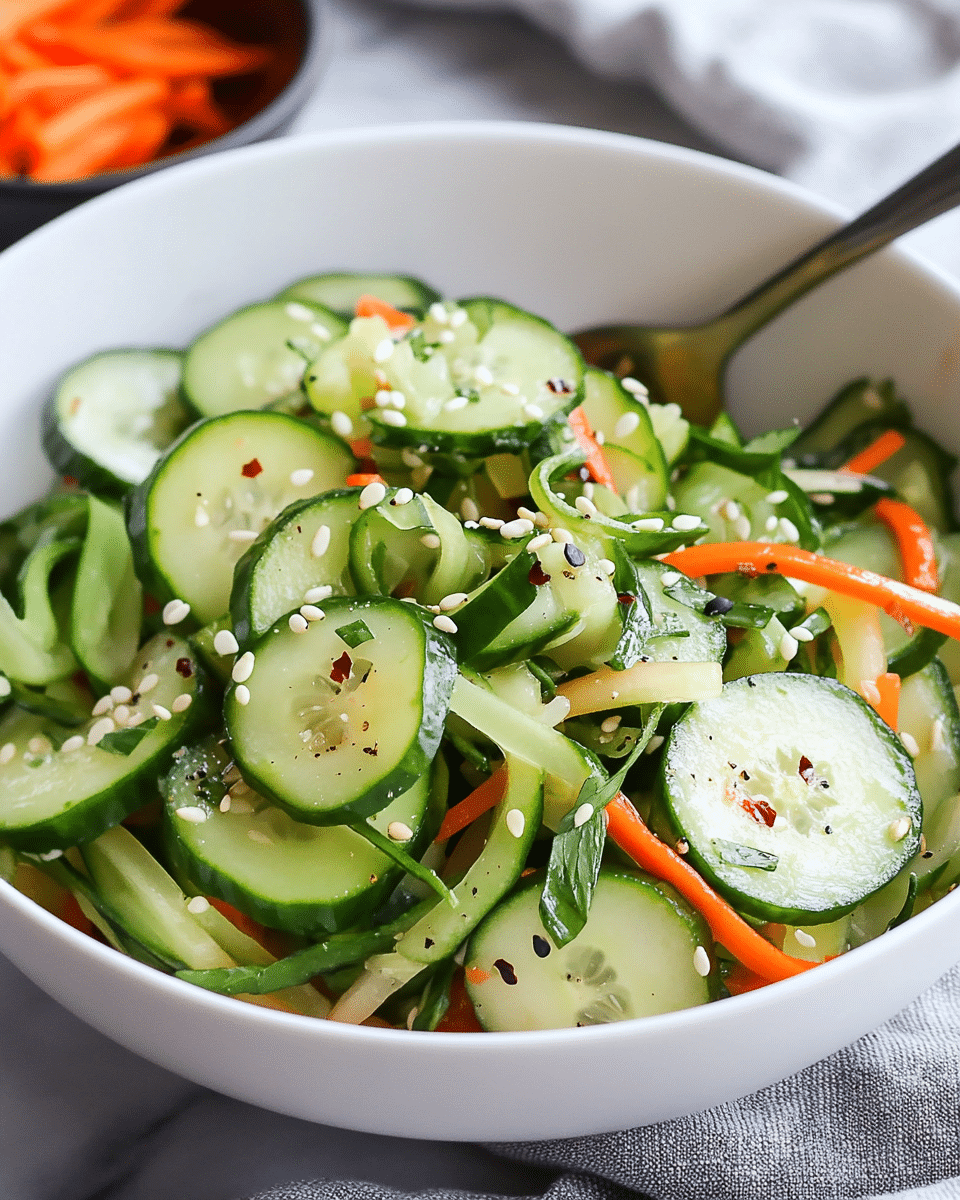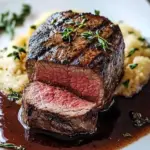A refreshing and light salad that combines crisp cucumbers with a creamy, tangy dill dressing. Perfect as a side dish or a cool appetizer on warm days.
FULL RECIPE
Ingredients
- 2 large cucumbers, thinly sliced
- 1/2 cup sour cream or Greek yogurt
- 2 tablespoons fresh dill, chopped
- 1 tablespoon lemon juice or white vinegar
- 1 teaspoon sugar
- 1/2 teaspoon salt
- 1/4 teaspoon black pepper
- 1 small red onion, thinly sliced (optional)
Directions
- In a large bowl, whisk together sour cream (or Greek yogurt), lemon juice (or vinegar), sugar, salt, and pepper until smooth.
- Add the sliced cucumbers and red onion (if using) to the bowl.
- Gently toss to coat all the vegetables in the creamy dressing.
- Stir in the chopped fresh dill.
- Cover and refrigerate for at least 30 minutes before serving to let flavors meld.
- Serve chilled as a side or appetizer.
Nutritional Information
- Calories: 90 kcal
- Protein: 2 g
- Fat: 6 g
- Saturated Fat: 3.5 g
- Carbohydrates: 6 g
- Fiber: 1 g
- Sugar: 4 g
- Sodium: 280 mg
The Origin and History of Cucumber Dill Salad
Cucumber dill salad is a classic dish with roots in many European cuisines, particularly Eastern European and Scandinavian traditions. The use of fresh dill paired with cucumbers and a creamy base reflects the simple yet flavorful approach common in these regions. Dill has long been prized for its aromatic qualities and digestive benefits, making this salad not only tasty but also a staple for balancing heavier meals in cold climates. Over time, the recipe has been embraced worldwide, evolving with local twists while retaining its fresh, crisp identity.
Health Benefits of Cucumbers
Cucumbers are a hydrating vegetable made up of about 95% water, which makes them an excellent choice for maintaining hydration and supporting healthy skin. They are low in calories yet rich in antioxidants such as vitamin C and beta-carotene. Cucumbers also contain anti-inflammatory compounds and fiber, which aid digestion and contribute to a feeling of fullness. Incorporating cucumbers into your diet, especially in refreshing salads like this, supports overall wellness and helps maintain a balanced diet.
Nutritional Profile and Advantages of Dill
Dill is more than just an herb for flavor; it offers a range of nutritional benefits. It contains essential vitamins such as A and C, minerals like calcium and iron, and powerful antioxidants. Dill has traditionally been used to support digestion and reduce bloating. The herb also contains compounds that may have antimicrobial and anti-inflammatory effects. Including fresh dill in a creamy cucumber salad adds a burst of flavor alongside these health benefits, making the dish both delicious and nourishing.
Creamy Dressing Alternatives and Their Impact
While traditional recipes often use sour cream, Greek yogurt has become a popular substitute for a healthier twist. Greek yogurt provides more protein and probiotics, which aid gut health, while maintaining the creamy texture essential for this salad. Other variations include using mayonnaise or even a dairy-free base like coconut yogurt for those with dietary restrictions. Each option slightly changes the flavor and nutritional profile but keeps the essence of a creamy, tangy dressing intact.
The Role of Lemon Juice or Vinegar in Flavor Balance
Acidic ingredients like lemon juice or vinegar are crucial for balancing the richness of the creamy dressing and the mildness of cucumbers. They add brightness and a subtle tang that elevates the overall flavor profile. Lemon juice brings a fresh, citrusy note, while vinegar—whether white, apple cider, or malt—adds a sharper, fermented taste. This acid also helps preserve the salad’s freshness and can enhance digestion, making it a thoughtful addition beyond taste.
The Importance of Texture in Cucumber Dill Salad
Texture plays a significant role in the enjoyment of this salad. The crispness of thinly sliced cucumbers contrasts beautifully with the smooth creaminess of the dressing. Including optional ingredients like thinly sliced red onions adds a slight bite and crunch, enriching the mouthfeel. Proper slicing and chilling the salad help maintain this refreshing texture, which is vital for a dish designed to be light and cooling.
Variations and Add-Ins to Customize Your Salad
This salad is highly versatile and invites numerous customizations depending on personal taste or dietary needs. Some like to add fresh herbs like parsley or chives alongside dill for added depth. Others include sliced radishes, cherry tomatoes, or even avocado for extra nutrients and color. For protein, some add crumbled feta or a sprinkle of toasted nuts and seeds. Each variation offers a unique twist while keeping the salad’s fresh and creamy essence.
Serving Suggestions and Pairings
Cucumber dill salad is incredibly versatile in how it can be served. It works perfectly as a side dish to grilled meats, fish, or vegetarian mains, providing a refreshing counterbalance to rich or spicy flavors. It can also be served as an appetizer or part of a mezze platter alongside hummus, pita, and olives. In warmer months, it’s a popular choice for picnics and barbecues because it requires minimal preparation and stays fresh chilled.
Storage Tips and Shelf Life
Proper storage is key to maintaining the salad’s crisp texture and vibrant flavor. It’s best kept in an airtight container in the refrigerator and consumed within 2-3 days. Cucumbers tend to release water over time, which can thin the dressing; gently stirring before serving can help redistribute the flavors. If making ahead, consider storing cucumbers and dressing separately and combining them just before serving to preserve freshness.
Dietary Considerations and Suitability
This salad is naturally gluten-free, vegetarian, and can easily be made vegan by substituting the dairy with plant-based alternatives. It is low in calories and carbohydrates, making it suitable for various diets, including keto and paleo with slight modifications. The ingredients are wholesome and minimally processed, appealing to those seeking clean eating options. However, individuals with dairy allergies should be mindful of the creamy base and choose appropriate alternatives.
The Cultural Significance of Dill in Cooking
Dill holds a special place in many cultures, symbolizing hospitality and health. It’s often used in traditional dishes during festive occasions in Eastern Europe and the Mediterranean. The herb’s fresh, distinctive aroma is associated with summer and renewal, making it a seasonal favorite. Understanding the cultural importance of dill enriches the appreciation of this salad beyond its taste, connecting it to a larger heritage of culinary tradition.
How This Salad Fits into a Balanced Meal
Cucumber dill salad provides hydration, fiber, and essential nutrients while complementing protein and carbohydrate sources in a meal. Its light nature makes it an ideal starter or side that doesn’t overwhelm the palate but enhances the overall dining experience. By including a vegetable-rich, creamy salad like this, you add variety in texture and flavor, supporting balanced nutrition and aiding digestion through its ingredients.
Conclusion
Creamy cucumber dill salad is a timeless dish celebrated for its refreshing qualities, health benefits, and culinary versatility. Its simple ingredients come together to create a harmonious balance of flavors and textures, suitable for numerous occasions. Whether enjoyed as a side dish, appetizer, or part of a larger meal, it offers both nourishment and satisfaction. Incorporating this salad into your repertoire not only enriches your meals but also connects you to a rich cultural and culinary tradition.








